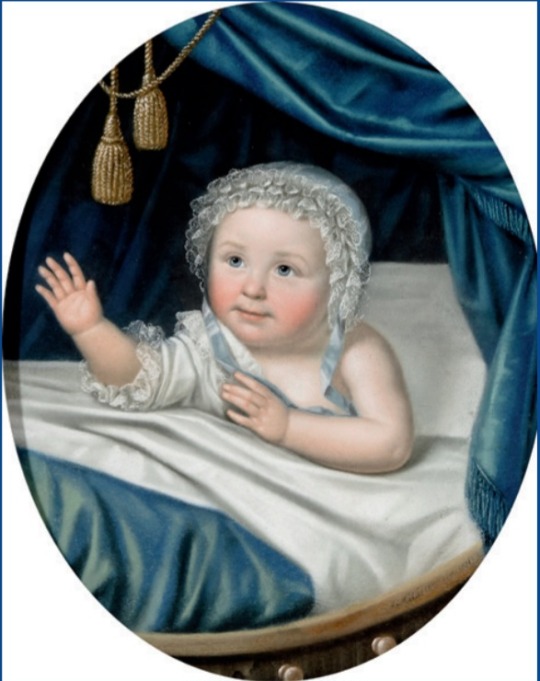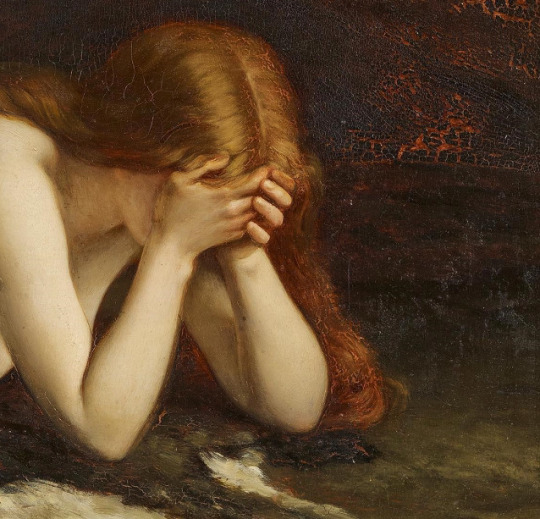#1821-2021
Explore tagged Tumblr posts
Text










Tonino Lamborghini Over the Years 1981-2021
Lamborghini, Funo di Argelato 2021, 128 pagine, 24 x 33,5 cm
euro 40,00
email if you want to buy [email protected]
A quattro decenni dalla fondazione, la storia della Tonino Lamborghini S.p.A. si riversa nelle pagine del libro “Tonino Lamborghini Over the Years. 1981-2021”, un progetto ideato e personalmente seguito da Ferruccio Lamborghini che dedica il volume al padre. Un libro stampato in edizione limitata di 500 copie, nato letteralmente “sotto il segno del Toro”, con una storia tutta italiana che merita di essere raccontata e celebrata. Nel corso di questi primi quarant’anni dalla fondazione, la Tonino Lamborghini ha scritto pagine di una storia tuttora in divenire, distinguendosi nel panorama imprenditoriale italiano per carattere e intraprendenza, dimostrando un’audacia fuori dal comune nell’escogitare e tentare sempre nuove imprese. L’inesauribile curiosità e l’eclettismo del fondatore hanno permesso al marchio di spaziare ed eccellere in diversi settori merceologici, che negli anni sono stati reinterpretati in maniera sempre innovativa e peculiare. Il frutto di questo sforzo costante è mostrato nelle pagine di questo volume raffinato destinato agli appassionati.
Sfogliando le pagine del volume, si nota come ogni prodotto sia riuscito a intercettare le mode e le necessità del momento, sempre con l’aggiunta di quel tocco personale che ha caratterizzato l’esperienza della Tonino Lamborghini. Nel volume Over the Years gli oggetti di consumo sono immortalati come opere d’arte da celebrare nel rispetto di una storia che ha fatto grande l’Italia. Perché “Heritage is our future”, come ha dichiarato Ferruccio Lamborghini.
Le collezioni del brand del Toro sono un concentrato di stile italiano: linee decise e un design originale sono sempre stati il punto di partenza per la creazione di nuovi accessori e l’ideazione di progetti, sempre pensati come vere e proprie esperienze di lusso. Nelle varie espressioni del lifestyle design del brand gli oggetti rappresentano un modo di essere attraverso una calligrafia stilistica che pone in equilibrio innovazione e solido background familiare; fonti di ispirazione per chi desidera vivere ed esibire con orgoglio un prestigioso pezzo di storia italiana.
26/06/23
orders to: [email protected]
ordini a: [email protected]
twitter:@fashionbooksmi
instagram: fashionbooksmilano
designbooksmilano
tumblr: fashionbooksmilano
designbooksmilano
5 notes
·
View notes
Text










The Kingdom of Spain ceded the territory of Florida to the United States on July 17, 1821.
#Kingdom of Spain#Florida#17 July 1821#St. Augustine#vacation#travel#Castillo de San Marcos National Monument#original photography#summer 2016#2010#2021#Spain#tourist attraction#Sevilla#Seville Cathedral#Almería Cathedral#Peñíscola#Tallahassee#Old State House#White House#Washington DC#Chicago#New York City#anniversary#US history#Spanish history#USA#landmark#cityscape#architecture
10 notes
·
View notes
Text
recommended resources on Lebanese resistance and its context
this has been in my drafts for a long time bc I wanted to find more audio resources but in light of recent events I'm posting as is, and will add more later. pdfs for texts without links can be found on libgen ⭐ = start with these 📺 = video resource 🎧 = audio resource Hizballah ⭐ Lara Deeb, "Hizballah and Its Civilian Constituencies," in The War on Lebanon: A Reader, eds. Nubar Hovsepian and Rashid Khalidi (2007)
⭐🎧 Electronic Intifada Podcast with Rania Khalek, "Why Hizballah would deal Israel a deadly blow" (2024)
⭐🎧 Electronic Intifada Podcast with Amal Saad, "How Hizballah Aims to Deter Israel" (2024)
📺 Rania Khalek, Interview with Hezbollah's Second-in-Command Sheikh Naim Qassem (2023)
🎧 Rania Khalek and Julia Kassem, "The Hybrid War on Lebanon is All About Weakening Hezbollah" (2022)
Hassan Nasrallah, "Voice of Hezbollah: The Statements of Sayyed Hassan Nasrallah," ed. Nicholas Noe (2007)
Judith Harik, "Hizballah's Public and Social Services and Iran," in Distant Relations: Iran and Lebanon in the last 500 years (2006) Sarah Marusek, Faith and Resistance: The Politics of Love and War in Lebanon (2018)
Abed T. Kanaaneh, Understanding Hezbollah: The Hegemony of Resistance (2021)
Karim Makdisi, "The Oct. 8 War: Lebanon's Southern Front" (2024) Political theory ⭐ Ussama Makdisi, "Understanding Sectarianism," in The War on Lebanon: A Reader, eds. Nubar Hovsepian and Rashid Khalidi (2007)
⭐ Rula Juri Abisaab and Malek Abisaab, The Shi'ites of Lebanon: Modernism, Communism, and Hizbullah's Islamists (2014)
Ilham Khuri-Makdisi, The Eastern Mediterranean and the Making of Global Radicalism, 1860-1914 (2010) Tareq Y. Ismael and Jacqueline S. Ismael, The Communist Movement in Syria and Lebanon (1998) 2006 war ⭐ Gilbert Achcar and Michel Warschawski, The 33-Day War: Israel's War on Hezbollah in Lebanon and Its Consequences (2007)
The Electronic Intifada with Dahr Jamail, "The world just sat by" (2006)
The Electronic Intifada with Bilal El-Amine, "Lebanon in Context" (2006) The War on Lebanon: A Reader, eds. Nubar Hovsepian and Rashid Khalidi (2007)
Civil war and 1982 invasion ⭐📺 Up to the South, dir. Jayce Salloum and Walid Ra'ad (1993)
⭐📺 Wild Flowers: Women of South Lebanon, dir. Mai Masri and Jean Khalil Chamoun (1987)
⭐ Souha Bechara, Resistance: My Life for Lebanon (2003)
Jean Said Makdisi, Beirut Fragments: A War Memoir (1990)
Bayan Nuwayhed al-Hout, Sabra and Shatila, September 1982 (2004) Ottoman era Charles Al-Hayek, "How, then, did you try to rebel?"
Lebanon Unsettled, "Lebanon's Popular Uprisings"
Axel Havemann, "The Impact of Peasant Resistance on Nineteenth Century Mount Lebanon," in Peasants and Politics in the Modern Middle East (1991) Ussama Makdisi, The Culture of Sectarianism: Community, History, and Violence in Nineteenth-Century Ottoman Lebanon (2000)
Peter Hill, "How Global was the Age of Revolutions? The Case of Mount Lebanon, 1821" (2020) Mark Farha, "From Anti-imperial Dissent to National Consent: the First World War and the Formation of a Trans-sectarian National Consciousness in Lebanon" (2015) French mandate era ⭐ Kais Firro, Inventing Lebanon: Nationalism and the State Under the Mandate (2002) Sana Tannoury-Karam, "Founding the Lebanese Left: From Colonial Rule to Independence" (2021) Idir Ouahes, Syria and Lebanon Under the French Mandate: Cultural Imperialism and the Workings of Empire (2018)
Malek Abisaab, Militant Women of a Fragile Nation (2009) Misc ⭐📺 Leila and the Wolves, dir. Heiny Srour and Sabah Jabbour (1984)
⭐ Fawwaz Traboulsi, A History of Modern Lebanon (2007)
Karim Makdisi, "Lebanon's October 2019 Uprising" (2021)
2K notes
·
View notes
Text
it burns through me
by Anonymous
Caitlyn wants to show Vi how loved she is — she has some ideas.
Words: 1821, Chapters: 1/1, Language: English
Fandoms: Arcane: League of Legends (Cartoon 2021)
Rating: Explicit
Warnings: No Archive Warnings Apply
Categories: F/F
Characters: Caitlyn (League of Legends), Vi (League of Legends)
Relationships: Caitlyn/Vi (League of Legends)
Additional Tags: Plot What Plot/Porn Without Plot, Emotional Hurt/Comfort, Cunnilingus, Porn with Feelings, Fluff
Read on A03. from AO3 works tagged ‘Caitlyn/Vi (League of Legends)’
10 notes
·
View notes
Text


Lion Monument (1821) // 333 (2021)
55 notes
·
View notes
Text
Okay so if we take the lore literally in that energy vampires 'die' (and are reborn) EXACTLY every 100 years and i believe the wwdits timeline matches the year they come out (season 4 coming out in 2021) so we know that Colin dies and is reborn every '21 making the last time he was reborn 1921.
Now, if we take in consideration he was at the battle of the alamo we know he's had at least three births, one in 1821 (possibly his original birth), 1921, then 2021 so he's at LEAST 200 yrs old.
Also, while we know he ages/matures quickly after first being born then stays middle aged until he dies again, TECHNICALLY he was 15 when he and his 50 yr old boyfriend davy crocket fought at the battle of the alamo in 1836
#i believe he's probably had a few births before the 1800s but whos to say#maybe im not even making sense lol#wwdits#colin robinson#dupree
55 notes
·
View notes
Text
The Old Mausoleum and Princess Elisabeth.
In the Grand Ducal Hessian family, the name Elisabeth evokes melancholic feelings; as the lives of the beholders of this beautiful name, which means 'God-given', the princesses Elisabeth, later Grand Duchess Elizaveta Feodorovna (1864-1918) and Elisabeth, Elizaveta Feodorovna's niece (1895-1903), were princesses whose lives and destinies were intermingled with happiness, devotion, service, and sadness. Today, remembering the beholders of this name, we can remember another Hessian princess named Elisabeth who, like Grand Duke Ernst Ludwig's daughter, also died in childhood. Being so young when she passed away, information about her is scarce. She was the fourth child and first daughter of the Hereditary Princely couple of Darmstadt, Ludwig and Wilhelmine, but the fact is that Elisabeth's parents had been leading separated lives for a while and, the age gap with her older brothers, Princes Ludwig and Karl, was of more than a decade. Therefore, that her biological father was not the Hereditary Prince does not come as a surprise, being the most probable biological father August von Senarclens-Grancy, a Swiss noble in service to the court. He was also the possible biological father of her younger siblings, Alexander and Marie, but, like her, they were also recognized by Ludwig. Wilhelmine's pregnancy with Elisabeth is mentioned in a letter from her sister, Russian Empress Elizaveta Alexeievna to her mother, Amalie of Hesse-Darmstadt: '...I am very sorry for my poor aunt in Darmstadt [Luise, Grand Duchess of Hesse and by the Rhine, mother-in-law of Wilhelmine], whose eyes are in such a bad state. Is she happy with Mimi's [Wilhelmine's nickname] pregnancy ? Dear mother, I don't think I have been secretive with you, but when Mimi told me that I was the first person she had spoken to about her pregnancy, I thought it was not for me to be the first to speak of it, but for her in every way. I still don't know how far along she is, she hasn't told me, but I'm sure you do, dear mother...' . Three months after this letter was written, on the 20 of May of 1821, Amalie Elisabeth Luise Caroline Friederike was born. Although not directly mentioned, she was possibly named in honor of her maternal grandmother and maternal aunts and her official paternal grandmother. She, as a child, possibly spent the majority of her time with nannies that took care of her, and with her mother Wilhelmine. Elisabeth has been referred to as her mother's favorite daughter. Her mother, who loved to travel to Switzerland and had visited it several times before, decided to take all her children in a travel there, but what was to be a happy event, was marked by tragedy, as Elisabeth, in the outward journey, contracted scarlet fever and died on May 27, 1826, in Lausanne, a week after her fifth birthday.
Little Elisabeth was laid to rest first in the Darmstadt City Church for some time until 1831, when the mausoleum her mother had asked court architect Georg Moller to erect in the Rosehöhe, a most loved place for her, was finished. This mausoleum with time became an important burial place for the Hessian Grand Ducal family.
As for Wilhelmine, with the death of Elisabeth, her love for Switzerland, traveling, and life in general decayed. She said some years later 'the old wanderlust is no longer to be found in me'.
Wilhelmine died in 1836, and asked her husband, now Grand Duke Ludwig II, to have a simple funeral and to be laid to rest with her beloved Elisabeth.
Sources: L'impératrice Élisabeth, épouse d'Alexandre 1er by Grand Duke Nikolai Mikhailovich, podcast 'Treffpunkt Heilingenberg' #3 'Eine Affäre in der Schweiz', Die Hessin auf dem Zarenthron: Maria, Kaiserin von Russland, http://www.park-rosenhoehe.info/Park_Geschichte.html and https://freunde-des-schlossmuseum-darmstadt.de/wp-content/uploads/2021/09/flyer_palais.pdf
Thanks to @abigaaal for her feedback on this!




#grand ducal family of hesse-darmstadt#princess elisabeth of hesse-darmstadt (1821-1826)#Grand Duchess Wilhelmine of Hesse-Darmstadt#Princess Wilhelmine of Baden#Prinzessin Elisabeth (1821-1826)#Altes mausoleum#Old Mausoleum#Rosenhöhe#darmstadt#Too much Elizabeths
30 notes
·
View notes
Text
˗ˏˋ 🤍 ˎˊ˗
à la déité féroce, je vins d'une candeur liliale / prédestinée à floraître par la graine de la vénusté; / voudrais-je demeurer jeune pousse à la blancheur nivéale / ne guère être constellée des tachetures de la vétusté [...]
🌬🏛🕯☁️🕊🐚




Portrait of a Lady, 1894 - Vittorio Matteo Corcos.
Window Study, b. 1958 - Serguei Toutounov.
Cloud Study, 1821-1822 - John Constable.
⠈⠂⠄⠄⠂⠁⠁⠂⠄⠄⠂⠁⠁⠂⠄⠄⠂⠁⠈⠂⠄⠄⠂⠁⠁⠂⠄⠄
˗ˏˋ ❤️🔥 ˎˊ˗
[...] de mes aïeules, j'en suis les relents que médire il te plaît / amasseuse de sang, toi qui me voulait purificatoire; / guérisseuse au génie divinatoire, j'eus à penser tes maux / jamais assez mais suffisamment pour le saint embrasement / pourfendeur à la langue de glaive, coutumière à panser tes mots / est-ce ainsi, depuis Ève, que les femmes usent de l'onguent.
🔥🌋🩸🗡🌪🌑




Lying Female Nude (Mythology scene), 1881 - Victor Casimir Zier.
space, 2021 - Evi-gilatio.
Nymphs Dancing to Pan's Flute, 1920 - Joseph Tomanek.
Lacrimosa, 2020 - Nicola Samori.
#art#artists on tumblr#artwork#art detail#painting#1800s art#1900s art#2000s art#aesthetic#poetry#poets on tumblr#writing#writers on tumblr#female rage#witchcore#œuvre#peinture#esthétique#poésie#poème#textes en poème#poète#poètes sur tumblr#écriture#écrire#écrivains#lecture#à lire#féministe#sorcières
41 notes
·
View notes
Text


Sautoir "Impératrice" réalisée par l'émailleuse Sandrine Tessier pour Vever en or, émail, perles Akoya et diamants (circa 2021) inspiré par le pendentif "Sylvia" de Vever en or, diamants, rubis, agate et émail (1900) et le broche "Sirène" gouache d'Eugène Grasset pour Vever (circa 1900) à l'exposition “Histoires d'Imaginaires (1821-2024)” chez la Maison Vever, rue de la Paix, novembre 2024.
#expos#inspirations bijoux#ArtNouveau#fairies#mermaids#email#perle#diamant#illustrations#Vever#Tessier#Grasset
3 notes
·
View notes
Text

Adan Salazar, a member of the cabalgata (a parade of horseback riders), travels 20 miles from the neighboring town of Múzquiz to celebrate Juneteenth in 2018 in Nacimiento, the generational home of the Black Seminoles who escaped the threat of slavery in the United States.
Just Across The Border, This Mexican Community Also Celebrates Juneteenth
The “Southern Underground Railroad” helped formerly enslaved people reach freedom in northern Mexico. One village here has observed Juneteenth or “Día de los Negros” for 150 years.
— By Taryn White | Photographs By Luján Agusti | June 17, 2021
In northern Mexico’s Coahuila State there’s a village where locals celebrate Juneteenth by eating traditional Afro-Seminole foods, dancing to norteña music, and practicing capeyuye—hand-clapped hymnals sung by enslaved peoples who traveled the Southern Underground Railroad to freedom.
It may seem unlikely that this holiday would be honored in a small village at the base of the Sierra Madre range, but Nacimiento de los Negros—meaning “Birth of the Blacks”—became a haven for the Mascogos, descendants of Black Seminoles who escaped the brutality of the antebellum South and settled in Mexico.
Now, long after the group came to Nacimiento in 1852, a new challenge remains for the Mascogos: Keeping their culture and traditions alive. In a country of approximately 130 million people, where 1.3 million identify as Afro-descendants, there are only a few hundred Mascogos. Decades of navigating ongoing drought conditions in Mexico, currently affecting 84 percent of the country, have devasted the village’s agriculture-based economy. Younger community members have little choice but to seek new opportunities elsewhere.

A young girl dons on the Traditional Attire—Polka-Dot Dress, Apron, and Handkerchief—worn by Mascogos Women during Juneteenth celebrations in Nacimiento.
But there is hope—both in the strength of Mascogo identity and in the growing recognition of Juneteenth (June 19), a day that marks the freedom of enslaved people in Texas at the end of the United States Civil War and is considered by some to be America’s “Second Independence Day.” On June 17, President Joseph Biden Signed a Bill that recognizes Juneteenth as a federal holiday. Such recognition could also strengthen the visibility of this historic community nearly 2,000 miles from Washington. D.C.

Juneteenth Becomes A Federal Holiday! President Joe Biden signs the Juneteenth National Independence Day Act. Evan Vucci/AP, June 17, 2021
The Southern Underground Railroad
Hundreds of enslaved people fled from southern plantations to live among the Seminoles in Florida Territory during the mid-to-late 18th century. Spain granted freedom to enslaved people who escaped to Florida under their rule, but the U.S. did not recognize this agreement.
In 1821, the Spanish ceded Florida to the U.S., sending the Seminoles and their Black counterparts farther south onto reservations near the Apalachicola River. Andrew Jackson, territorial governor of Florida, ordered an attack on Angola, a village built by Black Seminoles and other free Blacks near Tampa Bay. Dozens of escaped slaves were captured and sold or returned to their previous place of enslavement; many others were killed.

From left to right: Jose, Aton, and Sebastian, members of the horseback parade, arrive in Nacimiento’s nogalera (a Park Surrounded by Walnut Trees) as part of Día de Los Negros.
Nearly a decade later, Jackson, now president, signed the Indian Removal Act of 1830 into law, which required Native tribes in the southeast to relocate to Indian Territory in what is now Oklahoma. Seminole and Black leaders opposed the forced removal, later leading to the Second Seminole War (1835–42). Halfway through the confrontation, the Seminoles called for a truce and agreed to move—if their Black allies were allowed to move safely as well.
The negotiations quickly fell through, and the war resumed, but the relocation of nearly 4,000 Seminoles and 800 Black Seminoles, also known as the Trail of Tears, had already begun.
Southern Underground Railroad
As many as 5,000 enslaved African Americans escaped to freedom in Mexico, after that country outlawed slavery in 1829. While most traveled on their own or in small groups, some were helped by an informal network of free African Americans, Mexicans, Tejanos, and German settlers. Motivations for assisting the refugees were complex—some did so out of sympathy, while others were paid to transport them across the border.

Katie Armstrong, NG Staff. Source: Thomas Mareite, Abolitionists, Smugglers and Scapegoats: Assistance Networks for Fugitive Slaves in the Texas-Mexico Borderlands, 1836–1861, Cahiers du MIMMOC; National Park Service, National Trails Intermountain Region
By 1845, most Seminoles had been relocated to Indian Territory, where many Black Seminoles who joined the journey were kidnapped and sold into slavery in Arkansas and Louisiana. Faced with continuous hardships in Indian Territory, members of the Black Seminoles, Seminole Indians, and Kickapoo tribe left Indian Territory in 1849 for Mexico, where slaves could live freely.
Mexico officially abolished slavery in September 1829, and in 1857, Mexico amended its constitution to reflect that all people are born free.
Alice Baumgartner, assistant professor of history at the University of Southern California, says that the Seminoles’ and Black Seminoles’ move to Mexico was part of a much longer history of Mexican authorities recruiting Native peoples who had been forced from their homelands to help defend Mexico’s northern border. In exchange for fighting, they would receive 70,000 acres of land in northern Coahuila as well as livestock, money, and agricultural tools.
“That alternative was far from perfect,” she says, “but it was an alternative nonetheless.”
Juneteenth—In Mexico And The U.S.
Even though the Emancipation Proclamation declared enslaved people in the Confederacy free on January 1, 1863, word had not fully spread to geographically isolated Texas, where slaveholders refused to comply with the federal orders.
It wasn’t until the last battle of the war when Union troops arrived in Galveston, Texas—a full two-and-a-half years after the Emancipation Proclamation was signed—that many enslaved people knew they were free.
One year later, freedmen in Texas organized “Jubilee Day” to commemorate the date, initially holding church-centered gatherings that provided oral history lessons on slavery. Today, the holiday, which is officially recognized in more than 47 states and the District of Columbia, typically includes barbecues, street festivals, parades, religious services, dancing, and sipping red drinks—the last to symbolize the bloodshed of African Americans.

Left: Josue, who is of Mascogo descent, honors the traditions of his community for Juneteenth, which now a federal holiday in the U.S. Right: Jennie Hidalgo was crowned the Queen of the Jineteada (the town’s pageant) for Nacimiento’s 2018 Juneteenth celebration.

Left: Gustavo wears the traditional dress for men during Juneteenth. Right: Jennifer celebrates Juneteenth with her community. After the parade of horseback riders arrives into town, Mascogo descendants gather under shade trees to barbecue and boil ears of corn over wood fires.
María Esther Hammack, a historian at the University of Texas at Austin, believes the first Juneteenth celebrations in Nacimiento may have been held as early as the 1870s due to military families traveling back and forth from Nacimiento to Fort Clark in Brackettville, Texas. From 1870 to 1914, Black Seminoles were enlisted by the U.S Army as Seminole Indian “scouts” to defend against other Native American tribes as the U.S. Government expanded into West Texas.
“People in el Nacimiento had already been enjoying freedom for many years, since their arrival in Mexico in 1850,” says Hammack. “[But] Juneteenth celebration in Coahuila, Mexico began as a means to show solidarity with their brethren in the U.S.,” says Hammack. Black Seminoles still living in Brackettville drive 160 miles south to celebrate Juneteenth with the Mascogos in Nacimiento.
While many details of the earliest celebrations have been lost to time, today’s traditions are a vibrant testament to Mascogo culture. On “Día de Los Negros,” women wearing traditional polka-dot dresses, aprons, and handkerchiefs assemble at the nogalera (a park surrounded by walnut trees) at dawn to begin cooking the communal meal. The cabalgata (a parade of horseback riders) begin their 20-mile journey from the neighboring town of Múzquiz, while the elders lead the community in clap-accompanied spirituals such as “Swing Low, Sweet Chariot.” Dancing to live music and playing bingo, a popular pastime in the town, are also musts.
By noon, the cabalgata arrives at the nogalera, and the townspeople enjoy traditional Afro-Seminole and Mexican dishes, such as corn on the cob, tetapún (sweet potato bread), pumpkin empanadas, pan de mortero (mortar bread), soske (corn-based atole), and asado (slowly cooked pork in hot peppers).
After a quick rest, the Mascogos reconvene at night for a party in the town’s plaza, where they dance the night away.
Threats To The Mascogo Culture
With more and more Mascogo descendants leaving Nacimiento for other parts of Mexico and the U.S., Dulce Herrera, a sixth-generation Mascogo and great-granddaughter of Lucia Vazquez Valdez—one of the last surviving negros limpios (pure Blacks)—fears the traditions of her culture will be lost.
She hopes to preserve them by teaching the younger generation of Mascogos the traditional songs and gastronomy of the community. Herrera is also working with her mother, Laura, and great-grandmother to raise the awareness of Mascogo heritage in Mexico.

Joseph stands with his horse’s whip. Currently, around 70 families live in Nacimiento and are dedicated to farming and cattle and goat ranching.
“Negros Mascogos is one of the most invisible Afro-descendant communities in Mexico,” she says, citing incidences in which community members were asked for official identification when visiting neighboring towns because “they think we are not Mexican.”
Her efforts have not been in vain. In May 2017, the governor of Coahuila signed a decree recognizing the Mascogos as Indigenous people of Coahuila.
As a result, Herrera and Valdez were able to secure federal funding for huertos familiares (community gardens) to assist community members with planting and selling their crops.
Travelers to Nacimiento can visit the small Museo Comunitario Tribu Negros Mascogos, which contains local artwork and exhibits related to Mascogo history. In 2020, the community also opened a restaurant, El Manà de Cielito, which serves local cuisine, and a hostel, Hospedaje Mascogos. Future plans include boosting cultural tourism by teaching community members to sell embroidered textiles, traditional handicrafts, and organic food as well as developing trails for walking, hiking, and horseback riding.
#Slavery#Underground Railroad#Native Americans 🇺🇸#Festivals#Cultural Conservation#Cultural Tourism#American 🇺🇸 Civil War#History & Culture
5 notes
·
View notes
Text
1821/2021
in 1821, my homeland gained independence from the Spanish crown who subjugated my people to their whims of supremacy and colonizing ways 200 years later,they celebrated their independence while, I, their daughter gained my independence from society’s chains wrapped up in patriarchal and sexist good intentions
10/5/22
#poetry#real life#truth#life#bpd#poets on tumblr#feelings#storytelling#mental health#life lessons#poem#poets and writers#peru#peruvian
2 notes
·
View notes
Text

“Existe uma história do negro sem o Brasil. O que não existe é uma história do Brasil sem o negro”, está frase pertence ao fotografo e ativista Januário Garcia, que faleceu em 2021. Ela foi retratada no podcast “projeto Querino”, na voz do jornalista Tiago Rogero.
Aprendemos na aula de história que a independência do Brasil teria sido um processo pacífico, que se deu sem guerras ou conflitos. Movimento protagonizado pelo príncipe regente Pedro (Dom Pedro I), que com bravura teria anunciado as margens do rio Ipiranga, “Independência ou morte”. Mas o que pouco se fala é que houve independência e morte. Do norte ao sul do país, for��as contra a emancipação e a favor lutaram por suas ideias. Sangue do povo negro, dos povos indígenas foram derramados em diversas batalhas, a agitação política começou nos fins de 1821 e só cessou mesmo em 1823, como indicou o historiador Hélio Franchini Neto em sua tese de doutorado.
Por mais que a história oficial tente encobrir e apagar, a independência teve heróis e heroínas negros, brancos e povos indígenas que foram às ruas e lutaram por suas ideias. Uma das guerras mais importantes aconteceu na Bahia, onde as tropas portuguesas não aceitaram a emancipação do Brasil.
A exemplo, da marisqueira quitandeira e capoeirista Maria Felipa. Mulher negra que, na ilha de Itaparica, na Bahia, teria liderado um grupo de mulheres que enganaram uma tropa de portugueses. Elas teriam armado uma emboscada e dado uma surra de cansanção (uma planta que causa queimadura) e após isso elas teriam incendiado os navios portugueses.
@sitemundonegro @pretanahistoria
14 notes
·
View notes
Text










World Pharmacists Day
World Pharmacists Day on September 25 is a celebration of every pharmacist, pharmaceutical scientist, and others who are part of this field. Four million people are engaged in this profession around the globe. World Pharmacists Day is thus not only a welcome event, but it is also a crucial holiday to honor the role these guys play in improving global health outcomes. The day is marked by events and activities sponsored by various governmental and non-governmental organizations. Globally, they all have one common goal — to increase awareness about pharmacists and their roles.
History of World Pharmacists Day
The ancient art of pharmacy probably began when someone somewhere first thought of applying the juice from leaves to heal a wound. There have also been Greek legends written centuries ago that spoke of gods being apothecaries or pharmacists. The Greek god of healing, Asclepius, delegated the compounding of his remedies to Hygieia, his apothecary or pharmacist.
For the longest time, healing and pharmacy went hand-in-hand and were often thought of as the same practice. The line between pharmacy and medicine began to be defined by the eighth century and was firmly established by the time the 17th century rolled along. Now, physicians could no longer prepare medications for their patients themselves. The field transformed yet again with the onslaught of World War II. New drugs were constantly introduced into the market, and the role of the pharmacist became more defined than ever.
Today’s pharmacist performs multiple vital duties. Their tasks include identifying and providing people with the right medication, overseeing stocking and restocking of medicines, and staying ahead of medicine expiry dates. This is probably why the International Pharmaceutical Federation (FIP) established this day to honor all pharmacists. The premier global body to represent all pharmacists and pharmaceutical scientists, the FIP aims to support the pharmacist network and the development of this profession. The reason behind the date for the annual celebrations can also be traced back to the FIP. According to the founders of this day, they wanted to honor the organization that was doing so much for pharmacists. This is why they picked the date the FIP was established — September 25, 1912.
World Pharmacists Day timeline
1618 The Oldest Drug Reference Book
Backed by King James I and used by the Royal College of Physicians, the book “Pharmacopoeia Londinensis” names and controls the sale of medicines.
1821 First Pharmacy College in the U.S.
The very first college to train pharmacists in America is the 'The Philadelphia College of Pharmacy' — now called Philadelphia College of Pharmacy and Science.
September 29, 1982 Changing the Way Pills Are Sold
Cyanide-laced Tylenol capsules kill seven people in Chicago after which tamper-resistant packaging becomes the new norm for pharmaceutical companies.
2008 An Artificial Pharmaceutical Assistant
The RIVA robotic device automatically prepares medicines, setting new pharmaceutical safety standards and reducing the chances of human error.
2009 An Idea Takes Root
At the International Pharmaceutical Federation's council meeting in Turkey, members float an idea to celebrate all pharmacists by founding a special World Pharmacists Day.
World Pharmacists Day FAQs
What is the theme of the World Pharmacist Day 2021?
The official theme for World Pharmacist Day 2021 was “Pharmacy: Always Trusted For Your Health,” to highlight how this part of the health sector — and its people — have always been trusted by the public.
What is national pharmacist day?
January 12 of each year is celebrated as National Pharmacist Day, to honor pharmacists and the work they do in the U.S.
Which country is the largest producer of pharmaceuticals?
Countries like China, Germany, the U.S., and Europe have consistently been the biggest producers of drugs and medicines over the past decades.
World Pharmacists Day Activities
Appreciate your pharmacist
Patronize local pharmacies
Learn about a pharmacist's role
We bet your local pharmacy has seen you through some very trying times. Show them your gratitude. Start with simple thanks and then move to advertise their awesome services to everyone you know.
Buy medicines and other available items from local pharmacies as much as you can. This way, you contribute towards keeping the place open and keep your pharmacist in a job.
What they do for the local community, how they've helped the global community, and which health services they are qualified to provide — learn all you can about this noble profession. Share this new information with everyone you know, so that they can celebrate this day too.
5 Cool Facts About Pharmacists
First-world pharmacists
Many pharmacists were famous people
The first commercial drug
The first pharmacy also sold traditional remedies
Ginger ale by accident
Around 90% of people in the U.S. live within five miles of a pharmacist — that's how many of these health professionals the country has.
Alexander Flemming (who discovered penicillin), Agatha Christie (world-famous crime author), and Hubert Humphrey (38th Vice President of the U.S.), are only some famous names who have also been pharmacists.
Pharmacists began selling the first mass-produced, pre-packaged drug called 'antipyrine' in 1883; by the 1900s, most medicines were sold by pharmacies this way.
Louis Dufilho, Jr., America's first licensed pharmacist, opened a pharmacy in New Orleans that sold Voodoo remedies, opium, and leeches, alongside traditional medicines.
A pharmacist named James Vernor was creating a mixture to calm the stomach when he accidentally made what would then be known as one of America's oldest soft drinks — 'Vernors Ginger Ale.'
Why We Love World Pharmacists Day
They're making the world richer
They're the most accessible
They make the world better
More than four million pharmacists worldwide had reportedly boosted the revenue of this market to around 1204.8 billion U.S.D! That's a big number, and it looks like it'll keep growing. We — and many governments, we're sure — love this positive growth.
Of all healthcare professionals, pharmacists are one of the easiest to get to. With a huge population of these professionals present worldwide, they have the potential and the opportunity to help people as soon as they are needed.
They readily use their expertise, knowledge, and skills to help us extract the best use from our medicines. Pharmacists are always ready to help, which is why we love that there's a special day dedicated to them.
Source
#USS Lexington (CV-16)#USS Lexington Museum - National Historic Landmark#USS Lexington Museum On The Bay#Apoteket Lejonet#Malmö#Sweden#architecture#cityscape#Corpus Christi#Texas#original photography#travel#USA#St. Augustine#Florida#Apotekarhuset#Ystad#John Pemberton#Atlanta#Georgia#World Pharmacists Day#25 September#WorldPharmacistDay#tourist attraction#vacation
3 notes
·
View notes
Text

"BEHOLD THE SUN, WAS SUDDENLY HIDDEN FROM ME..."
PIC INFO: Spotlight on the legendary bird of prey from Arab/Persian mythology, the Roc, watercolors by the late, great Eric Carle (1929-2021), from the children's book "Dragons Dragons and Other Creatures that Never Were" (1988).
"Behold the sun, was suddenly hidden from me, and the air became dull and dark. Methought a cloud had cover the sun. . .
I saw that the cloud was none other than an enormous bird of gigantic girth and inordinately wide of wing. . .
a huge bird, called the Roc, which feedeth it's young on elephants."
-- Sir RICHARD BURTON (1821-1890)
Source: www.fairyroom.ru/?p=56315&fbclid.
#The Roc#Dragons Dragons#1988#Roc#Dragons Dragons 1988#Eric Carle Artist#Sir Richard Burton#Eric Carle Art#Children's books#Kids books#Poetry#Watercolors#Arabian Mythology#Persian Mythology#Mythological#Rukh#Mythological Birds#Mythical Beasts#Mythical#Eric Carle's Dragons Dragons#Mythological Beasts#Legendary Bird#Legendary Bird of Prey#Illustration#Mythology#Mythical Creatures#Ruc#Eric Carle#Mythological Creatures#Dragons Dragons and Other Creatures that Never Were
5 notes
·
View notes
Text
she stings like she means it
by ladyqueerfoot
“Everyone in my life changed,” Vi says, her voice hardly above a whisper. “Promise me you won’t change.”
At first, Caitlyn doesn’t say anything. She looks at Vi, her blue eyes like a portal into her soul, brighter than all the lights in Zaun and the hair of someone she once called her sister.
Not anymore she is… Vi looks down at Caitlyn’s lips whilst she lifts up her chin and rubs her cheeks with her thumbs, pulling her closer.
Vi knows what this means. Knows what she’s been craving since the moment she saw Caitlyn. She tried to convince herself that she doesn’t deserve this, isn’t worthy after what she did to her.
But to hell with Vi’s sister. To hell with the devil who dares to share her blood.
In the brief moment before her in Caitlyn’s lips, Vi forgets all of that.
A continuation of Vi and Caitlyn's first kiss.
Words: 1821, Chapters: 1/1, Language: English
Fandoms: Arcane: League of Legends (Cartoon 2021)
Rating: Explicit
Warnings: No Archive Warnings Apply
Categories: F/F
Characters: Caitlyn (League of Legends), Vi (League of Legends)
Relationships: Caitlyn/Vi (League of Legends)
Additional Tags: Episode: s02e03 Finally Got The Name Right, Plot What Plot/Porn Without Plot, First Time, Top Caitlyn (League of Legends), Bottom Vi (League of Legends), Nipple Play, Vaginal Fingering, Cunnilingus, Orgasm Delay, Vi is Trying Her Best (League of Legends), Caitlyn is Whipped (League of Legends), No Beta We Die Like Caitlyn's Mom, POV Vi (League of Legends)
Read on A03. from AO3 works tagged ‘Caitlyn/Vi (League of Legends)’
10 notes
·
View notes
Text
⚓Boat Media Lineup⚓
The Adventures of Tintin (movie, 2012)
Anaconda (movies, 1997-2009)
Assassin’s Creed IV: Black Flag (video game, 2013)
A True Story (book, 2nd century CE)
Battleship (movie, 2012)
Captain Blood (movie, 1935)
Captain Ron (movie, 1992)
Captains Courageous (book, 1897)
The Cruel Sea (movie, 1953)
Der fliegende Holländer (opera, 1843)
Ghost Ship (movie, 2002)
Going to Weather (webcomic, 2022)
The Iliad (poem, 8th century BCE)
I'm on a Boat (music video, 2008)
Jacky Faber Chronicles (books, 2002-2014)
Jason and the Argonauts (movie, 1963)
Jaws (movies, 1975-1987)
Just Roll With It: Riptide (podcast, 2021-)
Lake Placid (movies, 1999-2018)
The Mermaid, the Witch, and the Sea (book, 2020)
Montague Siblings Series (books, 2017-2021)
Mr Midshipman Easy (book, 1836)
Mutiny on the Bounty (movie, 1935)
Narrative of the Most Extraordinary and Distressing Shipwreck of the Whale-Ship Essex (book, 1821)
The Odyssey (poem, 8th century BCE)
One Piece (manga, 1997-)
Pan (movie, 2015)
Pirates Dinner Adventure (live show, 2010-)
The Poseidon Adventure (book & movies, 1969, 1972 & 2006)
Railsea (book, 2012)
Return of the Obra Dinn (video game, 2018)
The Rime of the Ancient Mariner (poem, 1798)
The Sea Beast (movie, 2022)
The Sea Hawk (book & movie, 1915 & 1924)
The Sea-Wolf (book, 1904)
Sea of Thieves (video game, 2018)
Ship of Theseus (thought experiment)
Skies of Arcadia (video game, 2000)
Spiritfarer (video game, 2020)
Swallows and Amazons (books, 1930-1947)
Three Men in a Boat (To Say Nothing of the Dog) (book, 1889)
The True Confessions of Charlotte Doyle (book, 1990)
Trysor Y Morladron (book, 1960)
Two Years Before the Mast (book, 1840)
The Unbinding of Mary Reade (book, 2018)
Under Enemy Colors (book, 2007)
Voyage of the Basset (book, 1996)
The Voyage of the Beagle (book, 1839)
The Voyage of the Dawn Treader (book, 1952)
The Whale (movie, 2013)
The Wind in the Willows (book, 1908)
World of Warships (video game, 2015)
#bmt2 info#there are too many here to tag...#this is in general alphabetical order btw not in seed order#long post
22 notes
·
View notes